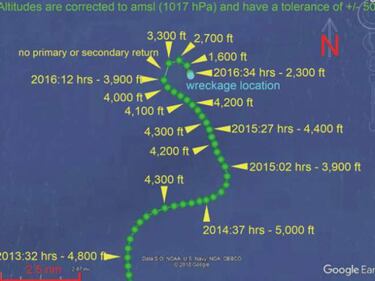Emiliano Sala: initial report into fatal crash published
The UK Air Accident Investigation Branch has released the preliminary findings into the circumstances surrounding the tragedy on January 21.

The UK Air Accident Investigation Branch (AAIB) has released the preliminary findings surrounding the circumstances of the fatal crash that coat the lives of Cardiff City striker Emiliano Sala and the aircraft’s pilot, David Ibbotson.
Argentinean forward Sala, 28, and Ibbotson were travelling from Nantes to Cardiff when their Piper Malibu aircraft was reported to have lost contact with air traffic controllers on the evening of January 21.
After a lengthy search, which was initially called off by authorities in the UK, the Channel Islands and France but later resumed after appeals from the families of Sala and Ibbotson, the aircraft was located on the seabed of the English Channel and Sala’s body recovered. Ibbotson remains unaccounted for.
The AAIB report noted that the aircraft had undergone scheduled maintenance shortly before the January 21 flight and was equipped with an ice protection system “that allowed it to fly into known icing conditions.”
The weather over the channel that evening was inclement with a freezing altitude of “between 3,000ft and 4,000ft above sea level”, the AAIB report read.
It remains unclear whether Ibbotson had the necessary qualifications to fly at night and in poor conditions. The pilot had filed a Visual Flight Rules (VFR) flight plan, which is based on the ability to visually identify other aircraft and in some instances the requirement to be able to see the ground in certain types of airspace. A VFR also precludes a flight plan through pre-existing cloud cover.
AAIB: "We continue to speak to the families of the pilot and passenger"

The AAIB report stressed that Ibbotson’s licence and log book were lost with the aircraft and therefore it was impossible yet to determine “the ratings on his licences and their validity.”
The AAIB will now aim to determine the implications of the weather conditions on January 21 and study radar information and images from the underwater equipment used to find the wreckage to attempt to discover at what attitude (orientation) the aircraft entered the water.
“We have gathered evidence from radar, weather reports, video of the aircraft on the seabed and interviews with witnesses. Some operational aspects are yet to be determined, such as the validity of the pilot’s licence and ratings,” a spokesman for the AAIB said after the report was published.
Related stories
“Our priority now is to go through the evidence, much of which is extensive and complex, so we can piece together what happened between the aircraft being lost from radar and it coming to rest on the sea bed. This will help us understand the potential causes of the accident.
“We continue to speak to the families of the pilot and passenger to keep them updated on the progress of our investigation. If any urgent safety issues arise during our investigation, we will issue a further Special Bulletin. When our investigation has concluded, we will publish a final report.”